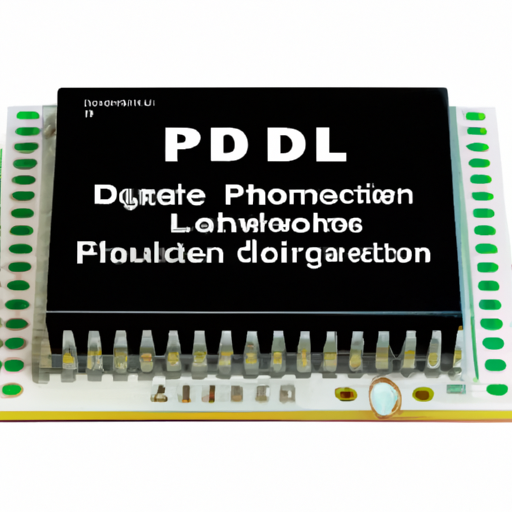1N5242B-T PLDs (Programmable Logic Device) highlighting the core functional technology articles and application development cases of PLDs (Programmable Logic Device) that are effective.
Overview of PLDs (Programmable Logic Devices)
Programmable Logic Devices (PLDs) are essential components in modern digital electronics, allowing designers to create custom logic circuits tailored to specific applications. Their programmability enables flexibility and adaptability in design, making them suitable for a wide range of applications, from simple logic functions to complex systems. The main types of PLDs include:
1. Programmable Logic Arrays (PLAs): These devices feature a fully programmable AND and OR array, allowing for maximum flexibility in logic design. However, they can be less efficient in terms of area and speed compared to other types.
2. Programmable Array Logic (PAL): PALs have a fixed OR array and a programmable AND array, which simplifies design and increases speed. They are less flexible than PLAs but are often preferred for their efficiency.
3. Generic Array Logic (GAL): GALs are a reprogrammable version of PALs, allowing for multiple programming cycles, which makes them suitable for prototyping and iterative design processes.
4. Complex Programmable Logic Devices (CPLDs): CPLDs consist of multiple programmable logic blocks and interconnects, enabling the implementation of more complex designs than PALs and GALs. They are often used in applications requiring moderate complexity and low power consumption.
5. Field-Programmable Gate Arrays (FPGAs): FPGAs are highly versatile devices that can be configured to perform a wide range of tasks. They consist of an array of programmable logic blocks and interconnects, making them ideal for complex applications such as digital signal processing, image processing, and more.
Core Functional Technology Articles
1. Architecture and Design of PLDs: Articles in this category delve into the internal structures of various PLDs, comparing FPGAs and CPLDs in terms of performance, power efficiency, and design complexity. Understanding these architectural differences is crucial for selecting the right PLD for a specific application.
2. Programming Techniques: Research on programming methodologies for PLDs, including the use of hardware description languages (HDLs) like VHDL and Verilog. These languages facilitate the design and implementation of digital circuits, allowing for more efficient coding and simulation.
3. Design Tools and Software: Exploration of the software tools available for PLD design, such as synthesis tools, simulation environments, and programming interfaces. Popular tools like Xilinx Vivado, Altera Quartus, and Lattice Diamond are discussed, highlighting their features and capabilities.
4. Performance Optimization: Articles focusing on techniques for optimizing PLD designs for speed, area, and power consumption. This includes strategies like pipelining, resource sharing, and efficient state machine design, which are essential for achieving high-performance designs.
5. Reliability and Testing: Research on the reliability of PLDs, including fault tolerance, testing methodologies, and design for testability (DFT) techniques. Ensuring the reliability of PLD-based systems is critical, especially in safety-critical applications.
Application Development Cases
1. Consumer Electronics: PLDs are extensively used in consumer electronics for tasks such as signal processing and control systems. A case study might involve designing a digital signal processor (DSP) for audio applications using FPGAs, showcasing the device's ability to handle complex algorithms in real-time.
2. Automotive Applications: In the automotive sector, PLDs are increasingly utilized for safety-critical applications like advanced driver-assistance systems (ADAS). A case study could highlight the use of CPLDs for sensor fusion and real-time data processing, demonstrating their role in enhancing vehicle safety.
3. Telecommunications: PLDs play a vital role in telecommunications for signal routing and protocol processing. An example case could involve implementing a network switch using FPGAs to manage high-speed data traffic, illustrating the device's capability to handle large volumes of data efficiently.
4. Industrial Automation: In industrial control systems, PLDs are used for automation and robotics. A case study may focus on developing a programmable logic controller (PLC) using CPLDs to manage complex machinery, showcasing the benefits of programmability in industrial applications.
5. Medical Devices: PLDs are employed in medical devices for data acquisition and processing. A case study could explore the use of FPGAs in imaging systems, such as ultrasound or MRI, to enhance image processing capabilities, highlighting their importance in advancing medical technology.
Conclusion
PLDs are a versatile and powerful technology that enables the design of complex digital systems across various industries. By understanding their core functional technologies and exploring application development cases, designers can gain valuable insights into their capabilities and potential uses. As technology continues to evolve, PLDs will remain a critical component in the development of innovative electronic solutions, driving advancements in fields such as consumer electronics, automotive systems, telecommunications, industrial automation, and medical devices.






